The Annual Statistical Report (ASR) presents all kinds of membership information collected from around the world in the Divisions of the Adventist Church. Statistics on baptisms, tithe returned and offerings given, and membership numbers are just a few of them. The recent 2021 ASR added a new table (Table 20, p. 14) and several graphs (pp. 5-6) on gender statistics. For many years, this has been a common statistical question posed to the General Conference Office of Archives, Statistics, and Research, so we are happy to announce that this data will now be published each year in the ASR. Many Divisions are now utilizing the Adventist Church Membership System (ACMS), a membership collection software (while the North American Division uses the eAdventist system), which enables us to collect relatively accurate gender statistics from the fields. 2021 was the first year that gender data statistics were collected, thus the initial data is incomplete because only nine Divisions are fully or partially utilizing the membership systems.
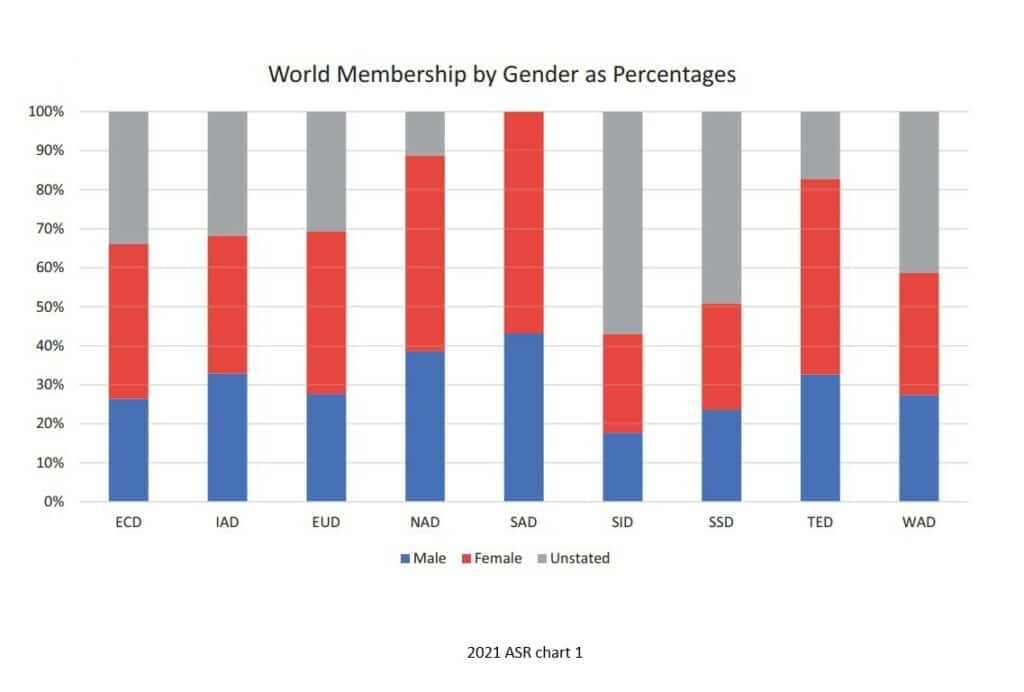
Chart 1 of the ASR shows the percentage of membership by gender for each of the nine reporting Divisions. It should be noted that not all members entered in ACMS and eAdventist have gender stated, however, more than two-thirds of the members in the membership systems have indeed recorded gender data. Because this is a very large reporting sample, we were able to generalize the results with a high degree of confidence. For example, in Chart 3, we were able to conclude that women far outnumber men in the Adventist Church (female 57%, male 43%).
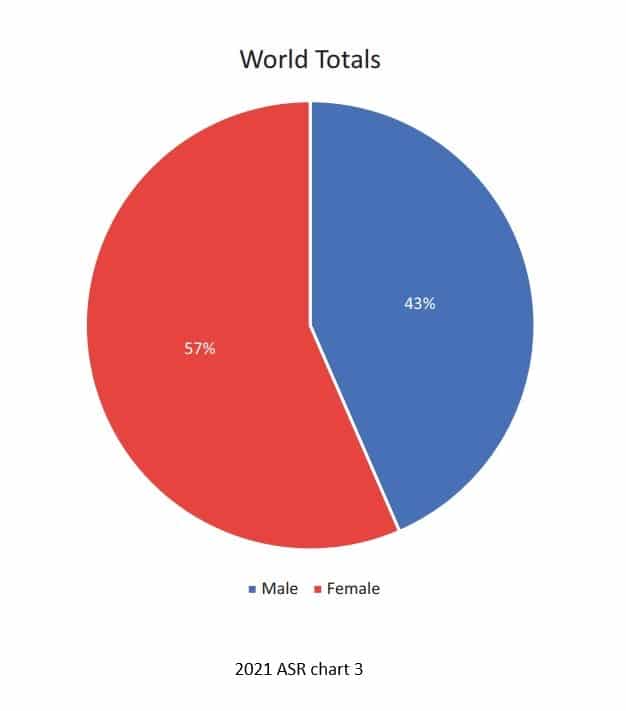
However, it should be mentioned that there are noteworthy regional variations. Charts 4-12 in the ASR show individual pie charts for each of the nine responding Divisions, not including the unstated category.
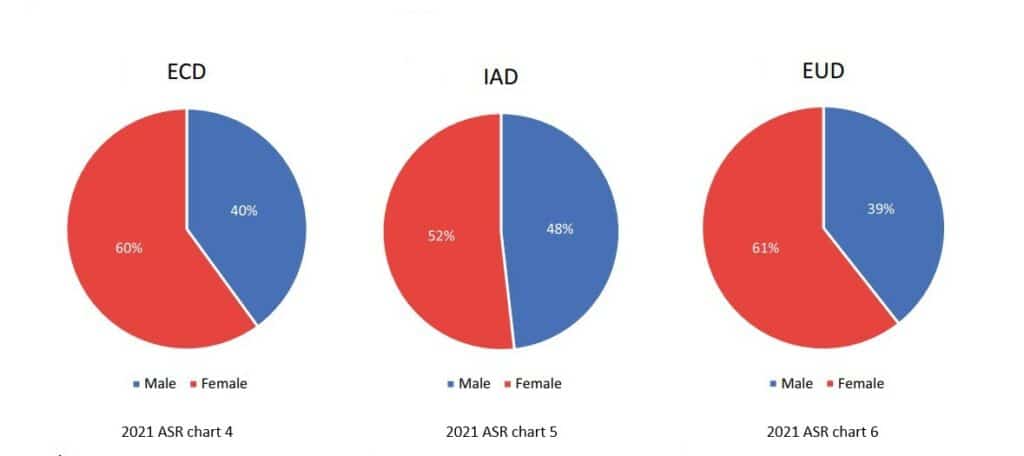
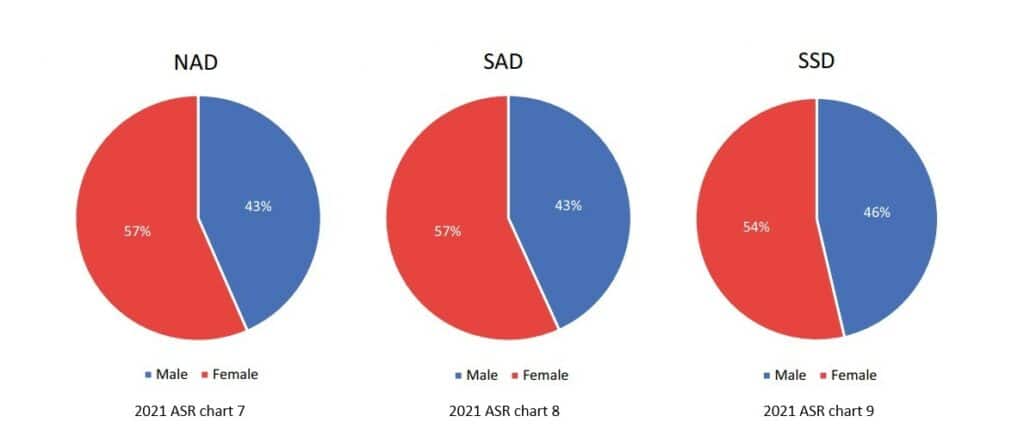
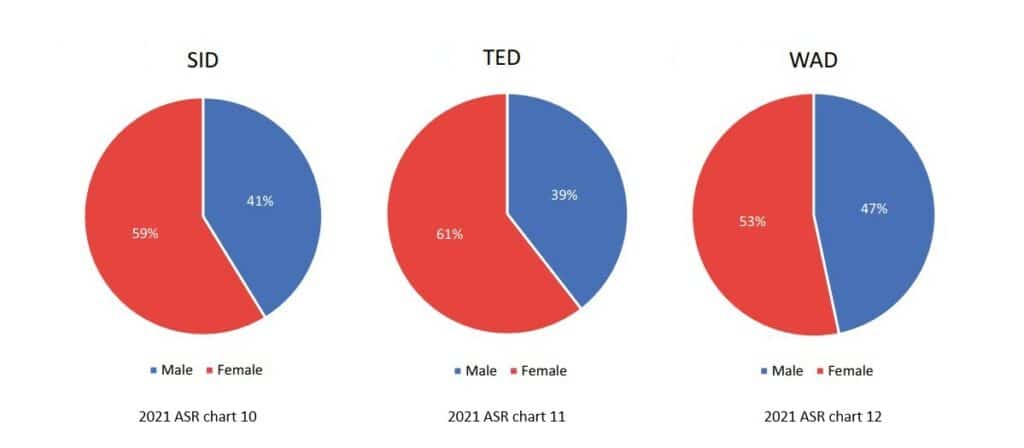
These are the most interesting findings according to world regions:
Americas: NAD’s and SAD’s gender splits match the world average, at 57% female and 43% male. IAD’s split is a little more than even, with 52% female and 48% male.
Western Europe: EUD and TED both report a gender split of 61% female and 39% male.
Asia-Pacific: SSD is close to the world average, with 54% female and 46% male.
Africa: ECD and SID have similar numbers. ECD reports 60% female and 40% male. SID reports 59% female and 41% male. The difference is more moderate in WAD, which reported 53% female and 47% male.
In time, as more Divisions utilize the ACMS membership collection software, we hope to obtain more accurate gender statistics which are important in understanding the dynamics of our ever-evolving Adventist Church structure.
What is the gender distribution in your local church? Does it reflect the world Church’s gender split, with females outnumbering males? What are the gender dynamics in your church’s baptisms? Though these questions are important, even more crucial is what every local church does to minister to the needs of every group, and how it helps them pass God’s love on to each other and to people in their community. “ For God so loved the world, that he gave his only begotten Son, that whosoever believeth in him should not perish, but have everlasting life” (John 3:16 KJV).
*To view the 2021 ASR or previous editions please visit: www.adventiststatistics.org
Published by ASTR on 03/23/2022

